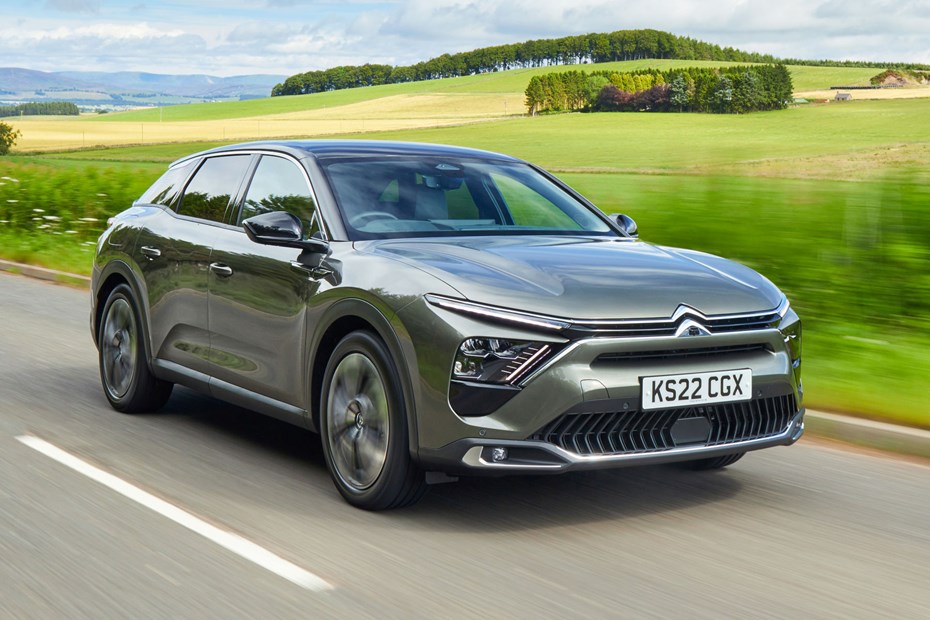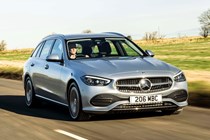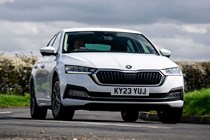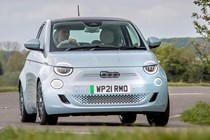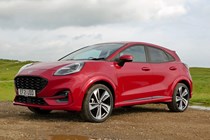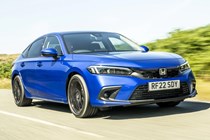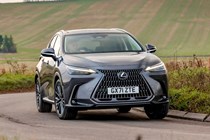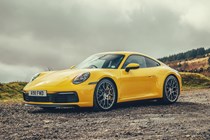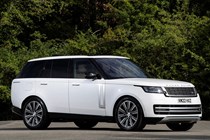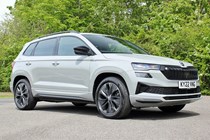Automatic gearboxes are more popular in the UK now than they have ever been. The Society of Motor Manufacturers and Traders reported that automatic car sales overtook manual car sales for the first time in 2020 – and the pendulum has only swung further towards automatics since. In 2021, automatic cars accounted for around 62% of new car sales in the UK, compared to just 40% in 2017. Consequently, many buyers are likely to be considering one of the best automatic cars for their next new car purchase.
The rapid shift away from manual gearboxes has been accelerated by the growing popularity of automatic hybrid cars and electric cars. However, manufacturers have noticed the buying trends and are now shoehorning automatics into more ordinary vehicles, such as family SUVs, hatchbacks and city cars.
An automatic gearbox is certainly less demanding to use than a manual gearbox, but you can pay a penalty for the convenience depending on the car. Unless it’s paired with a hybrid system, automatic gearboxes tend to be slightly less efficient than a manual gearbox – although the gap has narrowed in the past couple of decades. Automatics can also be more expensive to fix if something breaks, which can be important to factor into long-term ownership or when considering warranty length.
Lastly, automatic cars are usually a little more expensive to buy new than an equivalent car fitted with manual gearbox. Despite these drawbacks, it’s easy to understand why you might want your next car to be an automatic, so we’ve rounded up the best automatic cars on sale in the UK now. Scroll down to see what the market has to offer then head over to the Parkers cars for sale page to find your next motor.
The best automatic cars to buy in 2025
The 2023 Parkers Car of the Year is an excellent all-rounder
When you’re really pressing on, the engine is directly coupled to the front wheels and you’re off like a shot. The system has a combined output of 184hp and, more importantly, 315Nm of torque on tap, which makes the Civic quicker than any version of the Ford Focus and Volkswagen Golf (excluding their standalone ST and GTI performance models).
To find out more read our full Honda Civic review
Pros
- Powerful, responsive and efficient engine
- Best-in-class ride and handling
- Very comfortable
Cons
- No entry-level model
- Rear headroom is tight
Practical and comfortable SUV is a breeze to live with
It also has the biggest boot of any car in its class, thanks to Skoda’s intelligently designed Varioflex rear seats. They can be slid forward to increase boot space to a whopping 588 litres or removed completely to deliver a van-like 1,810 litres. Its automatic gearbox is the also same unit you’ll find in the Octavia and the Superb, which means it’s great.
To find out more read our full Skoda Karoq review
Pros
- Easy to drive and live with
- Very comfortable interior
- Generous standard equipment
Cons
- Not particularly sharp to drive
- 1.0-litre petrol engine underpowered
Great fun to drive and loads of space in the boot
The 125hp and 155hp versions of the Puma can be equipped with a seven-speed dual-clutch automatic gearbox, which strikes a keen balance between performance and comfort. Fuel economy isn’t affected too badly either – Ford says even the more powerful 155hp model will return between 47.9 and 48.7mpg under official testing conditions.
To find out more read our full Ford Puma review
Pros
- Economical petrol engines
- Great fun to drive
- Massive boot, thanks to Ford’s Megabox
Cons
- Rear legroom is a little tight
- Dashboard is slightly dull
Premium estate is now posher than ever, especially inside
Its nine-speed automatic gearbox is good, too. It keeps the C-Class’s engines hushed and can extract some impressive fuel economy figures. We managed to get 60mpg from the 2.0-litre diesel without really trying. It isn’t particularly exciting to drive, although Mercedes has worked on the steering feel for this latest model to give you a little more confidence when tackling a twisty B-road.
To find out more read our full Mercedes-Benz C-Class Estate review
Pros
- Classy interior
- Clever technology
- Very comfortable ride
Cons
- Passenger space is still tight
- UK cars have limited trim options
A refined and luxurious SUV that's effortless to own
It’s a convincing setup, especially on the plug-in hybrid powered 450h+ model, where the more powerful electric motors can help fill in the gaps in the petrol engines power band. The full hybrid 350h version is a little less convincing – floor the accelerator and the engine will scream to the redline while the gearbox does its thing – but it’s perfectly refined around town.
To find out more read our full Lexus NX review
Pros
- Comfortable and refined
- Good pure-electric range
- Quiet and relaxing
Cons
- Not exactly exciting
- Frustrating steering wheel controls
A welcome return for the big, comfortable Citroen
The C5 X’s suspension soaks up imperfection as well as cars from two price brackets up, thanks in part to Citroen’s clever progressive hydraulic bump stops. They ease the car into potholes gently and, when you reach the end of the suspension travel, they stop the shock absorbers from mashing themselves to pieces. Your only gearbox choice is an eight-speed auto, which does a great job of keeping the engine in its sweet spot.
To find out more read our Citroen C5 X review
Pros
- Cosseting ride, spongey seats
- Economical and punchy engines
- Practical and spacious interior
Cons
- Rear headroom is a little restricted
- No pure-electric version for now
Tiny electric city car with an enormous personality
Because it’s an electric car, there’s almost no delay between when you put your foot down and when the car accelerates. The performance is point-and-squirt and the handling is neat and direct. The near 200-mile range is impressive, too. Our only issue is the £30,000 starting price.
To find out more read our full Fiat 500 Electric review
Pros
- Chic styling, inside and out
- Quick and fun
- Good range
Cons
- Rather expensive
- Not particularly practical
One of the best all-round family cars on sale
It also has a rather good automatic gearbox. Petrol and diesel models can be equipped with a seven-speed dual-clutch unit, while the hybrids get a six-speed. Both shift smoothly, even when your foot’s mashed into the carpet. They’ve proved reliable, too – the same gearboxes are used across the entire range of Volkswagen Group cars, cropping up in everything from SEATs to Audis.
To find out more read our full Skoda Octavia review
Pros
- Wide range of engines
- Practical cabin, huge boot
- Pleasant to drive
Cons
- Prices have crept up
- Slightly anonymous styling
One of the very best luxury cars
It does a sterling job of keeping the engine quiet on the motorway when you’re cruising and, when you open to taps to whisk past slower traffic, it always finds the optimal gear to extract the best performance from the engine. It’s clever off-road, too. The gearbox is paired with a low-range transfer case and a four-wheel drive system, which give the Range Rover the kind of loose-surface ability most rivals can only dream about. It’s a class act.
To find out more read our full Range Rover review
Pros
- Effortlessly comfortable
- Formidable off-road ability
- Excellent on-road manners
Cons
- Hideously expensive
- EV model not due until 2024
Fast, fun and perfectly useable every day
The rest of the car is pretty good, too, to say the least. Even though the engine is slung out behind the rear axle (which, in classic 911s, produced some interesting handling characteristics), the latest 911 holds the road like a limpet. Just don’t get too merry with the options list – you can rack up a massive bill in extras.
To find out more read our full Porsche 911 review
Pros
- Superbly satisfying to drive
- Brilliant performance
- Quick-shifting automatic transmission
Cons
- Expensive options
- Slightly muted styling
Why choose a car with an automatic gearbox?
Comfort and convenience are the main draws for automatic gearboxes. They’re easier to drive, too. You don’t need to worry about clutch technique or missed shifts – you just slot the car into drive and treat it like an enormous go-cart.
There isn’t just one sort of automatic gearbox, though. Torque converter units are what we consider to be a ‘traditional’ automatic, but there are also CVTs, dual-clutch automatics and automated manual transmissions. In the case of electric cars (or, as mentioned above, the Honda Civic) there’s typically no conventional gearbox at all. Find out more about different types of automatic gearbox here.
Pros of automatic gearboxes
They’re a lot easier to drive than a manual. You only have two pedals to worry about, which means auto cars are very easy to drive in heavy congestion. You only need to dab the brakes to maintain your crawl with the traffic, rather than dancing with the three pedals and the gear lever.
Automatics are a lot more efficient than they were 20 years ago, too. Many modern automatic gearboxes – especially those supported by hybrid systems and equipped with seven, eight or even nine gears – can nearly match their manual equivalents for fuel economy and sometimes offer lower CO2 emissions. For some drivers, that marginal reduction in fuel economy is worth it for the added convenience.
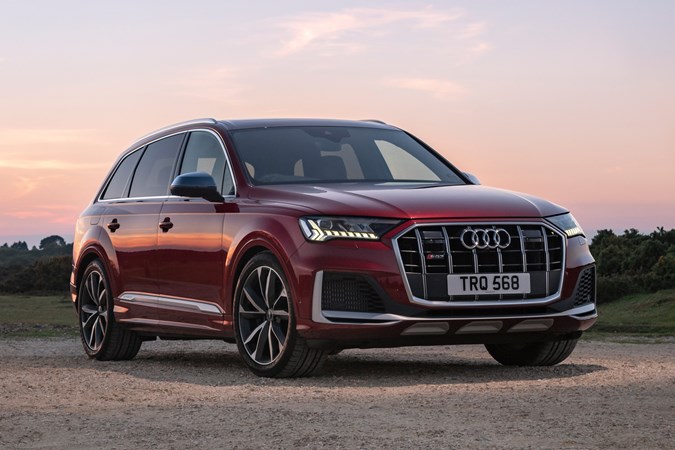
Powerful cars (such as the Audi SQ7, for example, pictured above) also suit an automatic gearbox. They’re better at controlling a high-performance engine, as they can shift gears faster than any average human. They also take some of the cognitive strain off the driver. When you’ve got 500hp under your right foot (and you’re not Lewis Hamilton), you don’t want to be worrying about changing gear.
Finally, automatic gearboxes lend themselves well to drivers who have medical conditions that inhibit their mobility. The government’s Motability scheme allows eligible applicants to remain mobile with a cash grant for a vehicle lease. The vehicles in the scheme can also be specified with or without wheelchair adaptations.
Cons of automatic gearboxes
An automatic gearbox isn’t a guaranteed passport to an easier motoring life. Not all automatic gearboxes are created equal – and if you get a bad one (such as the jerky automated manual transmission in the Suzuki Vitara hybrid), then you won’t enjoy driving it at all.
The effects of a bad manual gearbox can be masked by a skilled driver, but a bad automatic gearbox can’t be redeemed in the same way. Common problems include clunky changes, rubbish fuel economy and poor reliability – so we recommend you take a lengthy test drive to make sure you’re happy with the gearbox before signing on the dotted line.
Automatic-equipped cars normally cost more to buy than their manual equivalents. They can also cost more to service and repair in the long run, due to their additional complexity.
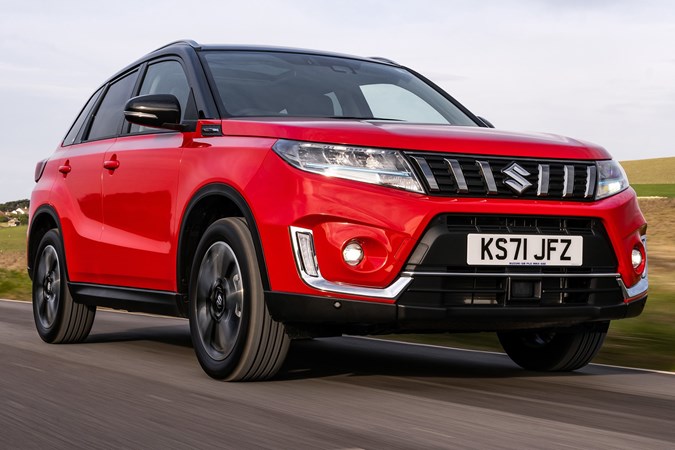
Keen drivers tend to find automatic gearboxes less involving than manuals – and we agree that they don’t suit every car. Small, buzzy sports cars and hot hatchbacks, for example, simply don’t feel right without a manual gearbox. But 500hp SUVs? Well, automatics were designed for those.
If you’re a new driver, you also need to consider licensing. For the time being, if you pass your driving test in an automatic car, you’re not legally allowed to drive a manual car unless you pass another test in one. That severely limits your options. Even if you intend to drive automatics for your entire life, we strongly recommend learning to drive in a manual car, just in case.
Can I tow an automatic car?
It’s best to check your car’s owner’s handbook to see if it’s safe to tow it. There will be a section devoted to towing and, if it’s possible to tow it, it should give you a maximum towing distance and speed for the car, as well as other useful related information.
As a general rule of thumb, emergency situations aside, you shouldn’t tow an automatic car if its driven wheels are going to be on the ground. Selecting neutral does not disconnect the wheels from the transmission, so their motion will cause the internal components of the gearbox to move. The lubrication system of the gearbox, however, is often driven by the engine – so, if the engine is off and the wheels are turning, vital components in the gearbox will be improperly lubricated and can overheat and wear excessively.
Tow a car like this for too long and significant damage can be caused. There are always exceptions to the rule, though, such as vehicles with a transfer case that can disconnect the wheels from the gearbox completely, which is why it’s always best to consult your car’s handbook.
Should I use park or neutral every time I stop?
This depends on your driving style but, generally, it’s not necessary. Automatic cars are designed to be held on the footbrake – and if you’re only going to be waiting for a few seconds at a red light or give-way sign, this is what we recommend doing.
If you’re stopping for longer, switching into park will give your foot a rest. It also minimises the risk of a lapse in concentration and prevents the car from creeping forward. As an added benefit, your brake lights won’t be searing the retinas of the driver in the car behind you.
If you’re switching into neutral, remember to always apply the parking brake or the vehicle won’t be secured and could roll away.
Are automatics more expensive to insure?
Not necessarily. Insurance costs can vary but the difference in price isn’t directly related to the gearbox. In fact, the leisurely nature of some auto cars may actually reduce their premiums.
Make sure you shop around for insurance quotes before buying your car. If you’re struggling to find a simple comparison tool, head over to our sister site mustard.co.uk. You can get a quote there in as little as five minutes.
What is a semi-automatic gearbox?
The term ‘semi-automatic gearbox’ is typically used to refer to transmissions that feature a conventional manual shifter and an automated clutch.
In these cars, the driver selects the gear and the car’s hardware will manage the operation of the clutch. The driver subsequently only has accelerator and brake pedals to contend with, making the car easier to drive than a conventional manual.
Porsche, for example, offered the Sportomatic transmission in its 911 in 1967. It employed a four-speed gearbox and had a conventional-looking manual gear lever, but featured only two pedals – and the driver had to manually select the gears as they drove along.
Some will also refer to conventional automatic gearboxes that offer manual gear selection as semi-automatic, which you’ll often encounter if you’re looking at listings for used automatic cars.
Just so you know, we may receive a commission or other compensation from the links on this website - read why you should trust us.


